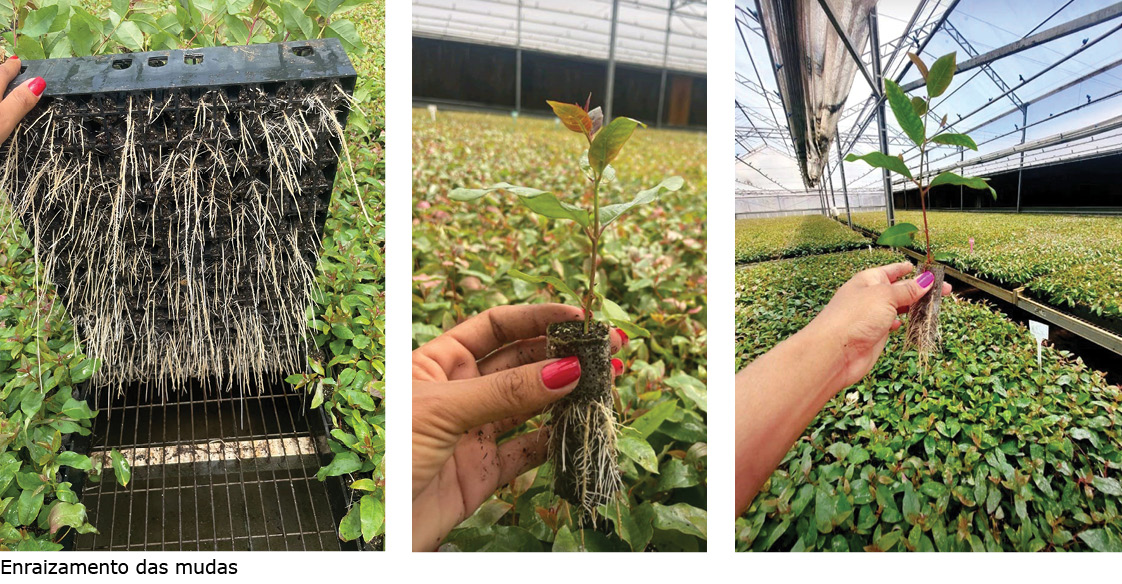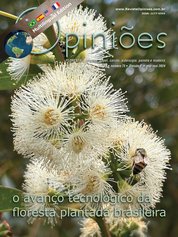Bruno Silva Reis
Suzano-MS Nursery Manager
OpCP75
Challenges in seedling production in light of current market advances
The increase in demand for clonal eucalyptus seedlings in the last five years in the forestry sector to support the expansion of planting programs in the national territory is noteworthy. This movement brought about a previously unseen imbalance between supply and demand, making the seedlings market complex and challenging.
Faced with this scenario, it is necessary to expand and reinvent the seedling supply strategy in a sustainable and competitive format in the forestry chain. Some pillars of action stand out as a compass. Among them, we mention: the constant race for the evolution of productive genetic materials, operational efficiency in nurseries, aligned with the quality of seedlings, training/training of labor for the sector and a low degree of maturity in the seedling market (supplier versus client).
One of the main levers related to productivity gains is the factor of clonal allocation, that is, the search for clones suitable for growth, with the quality and health in the climate and soil conditions that we have available for planting. For the nursery, this has been a great challenge, since the evolution of genetic improvement programs focusing on reducing the time for the availability of new genetic material is visible.
As a nurseryman, the mini clonal garden is a great challenge due to its formation and stabilization time for the emission of quality shoots. Today's large-scale propagation techniques will not be able to accompany genetic improvement programs in an economically viable way.
We must look for new structural forms and management techniques for creating mini clonal gardens, whether removable, interchangeable, hydroponic, among others. This advance will also help us overcome some diseases (such as the Ralstonia species ) and clonal mixtures in forest nurseries, factors that directly impact forest productivity.
From the perspective of operational efficiency in forest nurseries, we have an extensive avenue to be covered. We need to move towards the path of mechanization and automation, in search of end-to-end traceability of seedlings from the nursery to planting. This modernization process will allow us to significantly evolve in the use of new technologies in forestry.
Another topic to be discussed is the seedling production phases within the nursery. We must seek the most sustainable operation possible and, in this sense, I see that phases such as staking and first selection are at the forefront of this process with technology available to move forward. Regarding the topic of seedling packaging, biodegradable ones gain space due to factors related to gains in reverse logistics, increased productivity on the planting fronts, quality and environmental protection.
Combined with modernization processes and the use of technologies to increase efficiency, seedling quality and productivity in nurseries, it is also necessary to consider qualified labor for the sector. One of the pillars to be explored is the structuring of professional training programs focused on nursery operations. The best return options have been partnerships with technical education institutions, such as the National Industrial Learning Service and Federal Institutes, among others, and specialized companies, with well-structured content for initial training.
It is also necessary to encourage discussions of this nature with universities and research and development institutes and with large nurseries that produce seedlings, as only with this format will we have skilled labor to produce seedlings with quality and structural competitiveness. This is the safest way to guarantee forest productivity.
As mentioned at the beginning of the article, the imbalance between supply and demand has brought to light the challenges necessary for us to follow developments in the forestry sector and how necessary it is to use new technologies in the seedling production process. Problems such as low adherence to the physique of seedlings, poor quality of seedlings, lack of planning in the nursery aimed at assertive delivery of genetic material, difficulties with timely delivery logistics, little or no knowledge of nutritional management of nurseries for genetic materials specifics demonstrate the challenges of the seedling market in the face of the expansion of planting programs in Brazil.
One of the actions to minimize these impacts was training and technical support with personalized content on site from potential suppliers, but this is still very little for the sustainability and professionalization of the business, when compared to other markets.
I close by leaving some provocations for all those passionate about the topic. Among them, jointly rethinking the seedling production model in the country and in a short space of time. If this process of review and readjustment of route does not occur in the sector, we will face even greater challenges, from the lack of qualified labor to sustain the business, as well as the ability to follow the genetic evolution that the forestry system requires.
On the other hand, the lack of structural competitiveness and low availability of good suppliers will be limiting ingredients for the advancement of forestry expansions in the near future, whether due to the lack or low quality of seedlings. Seedling production is the heart of silvicultural processes and urgently requires a real partnership between those involved to maintain solid progress.





